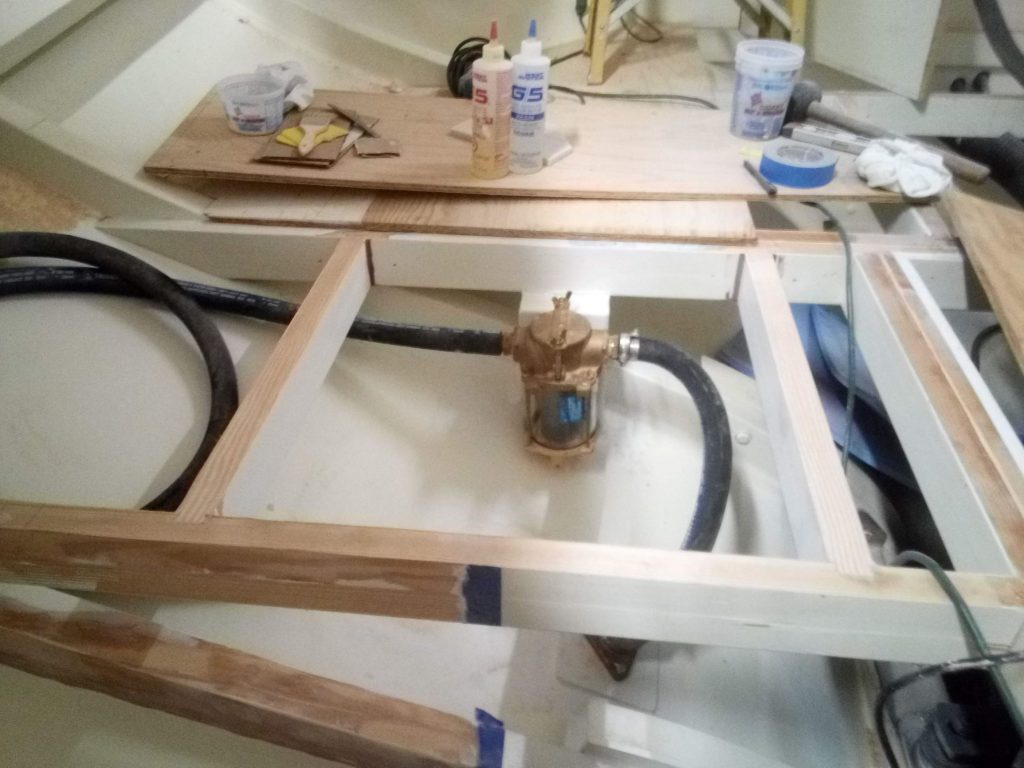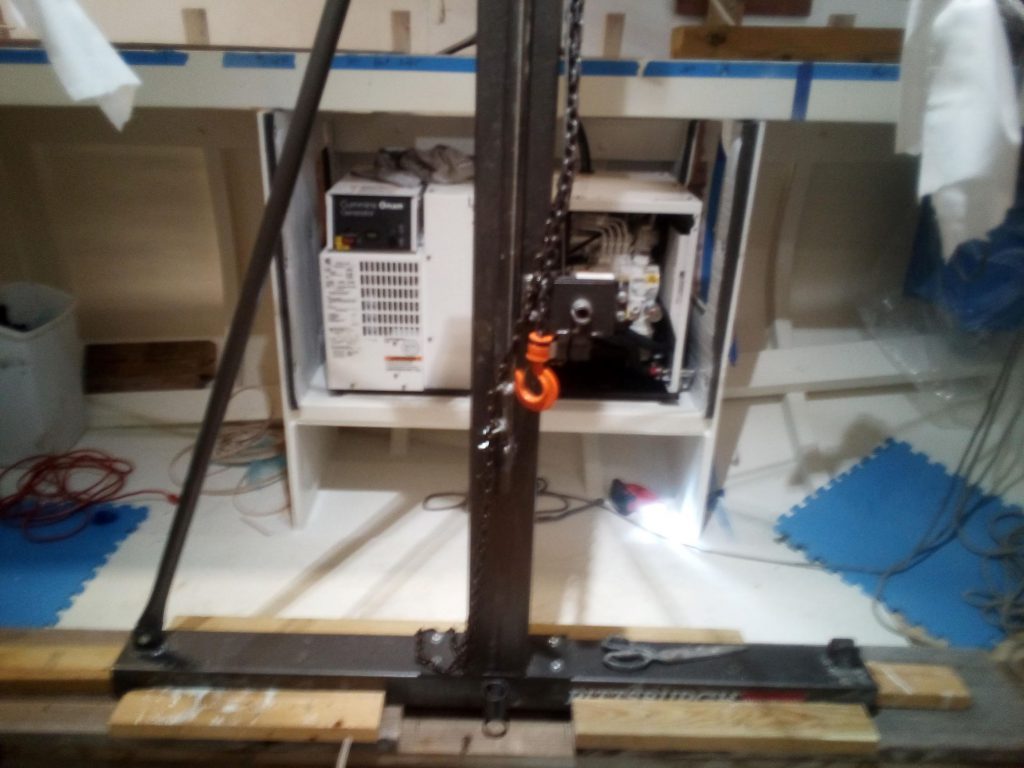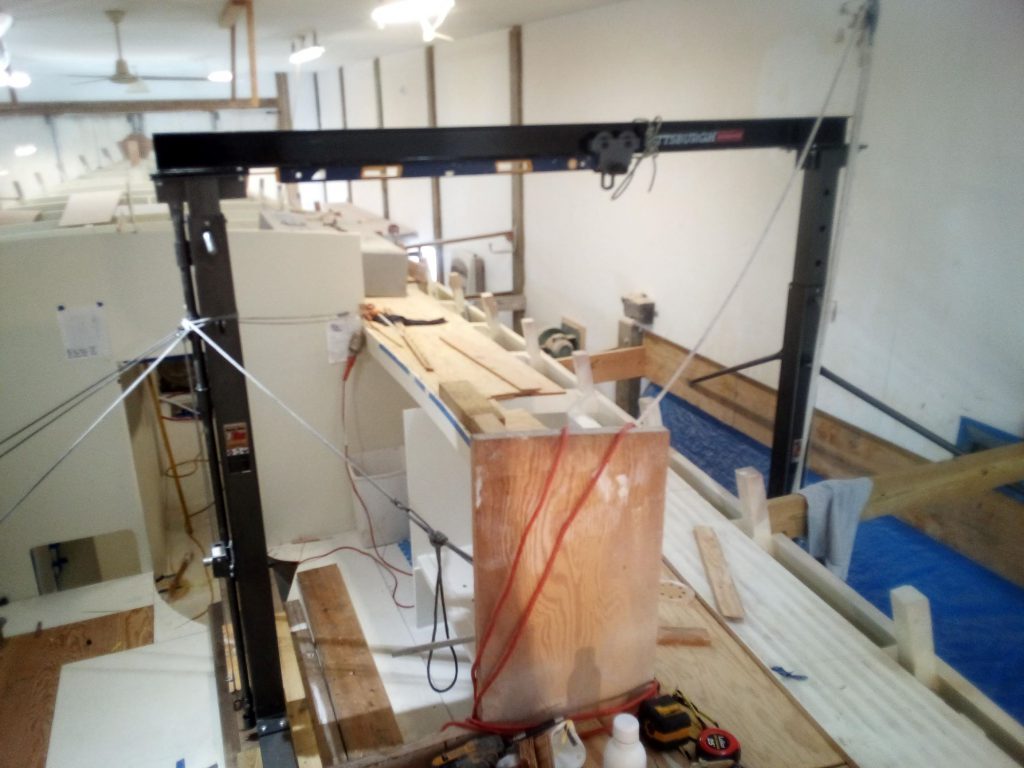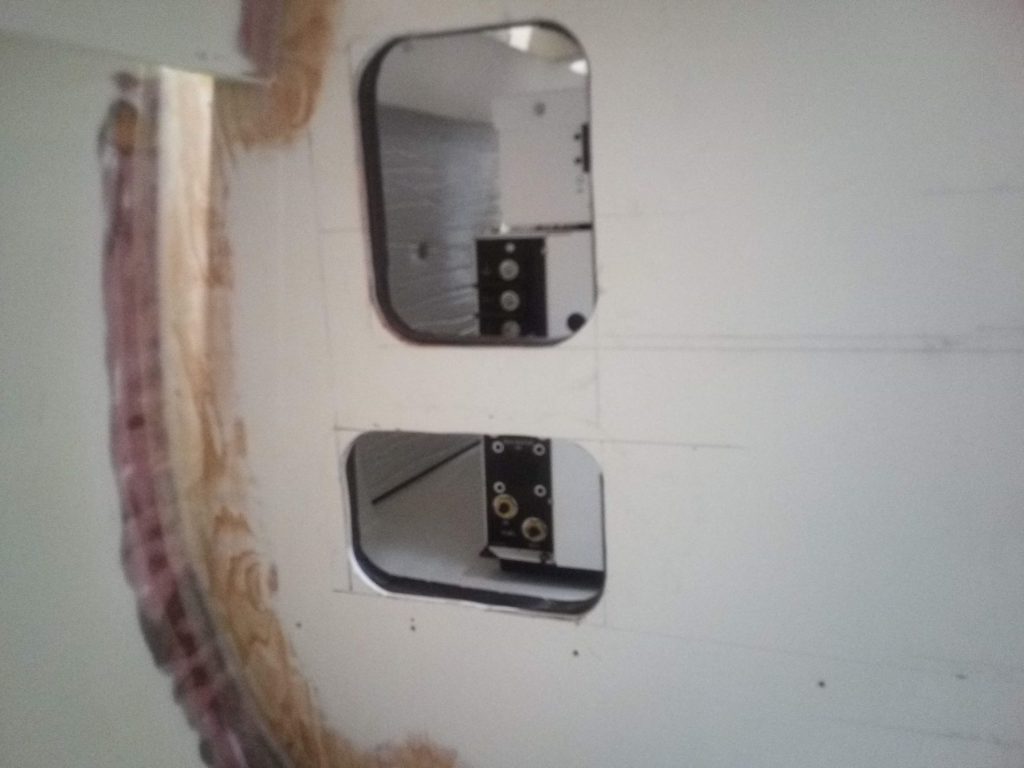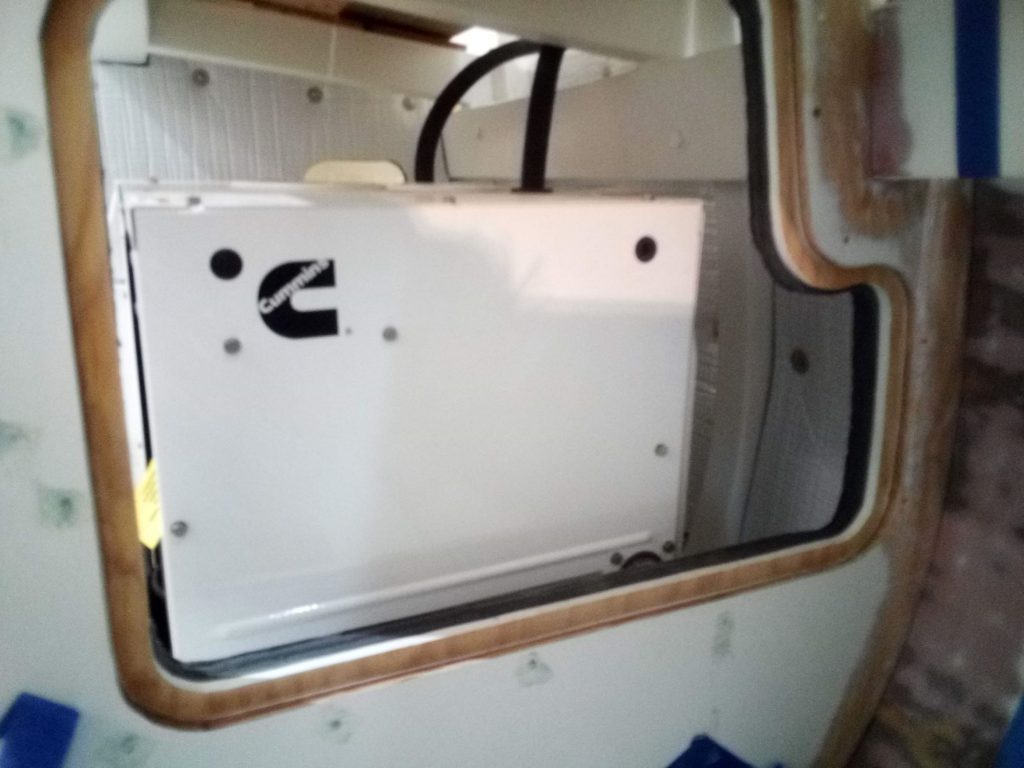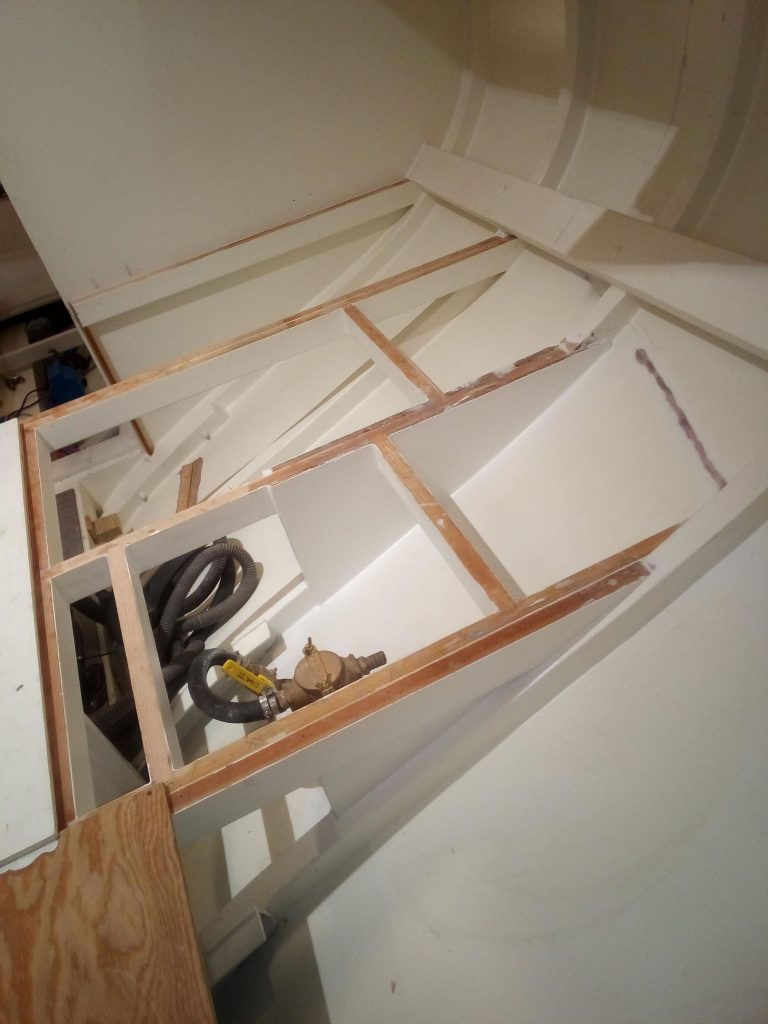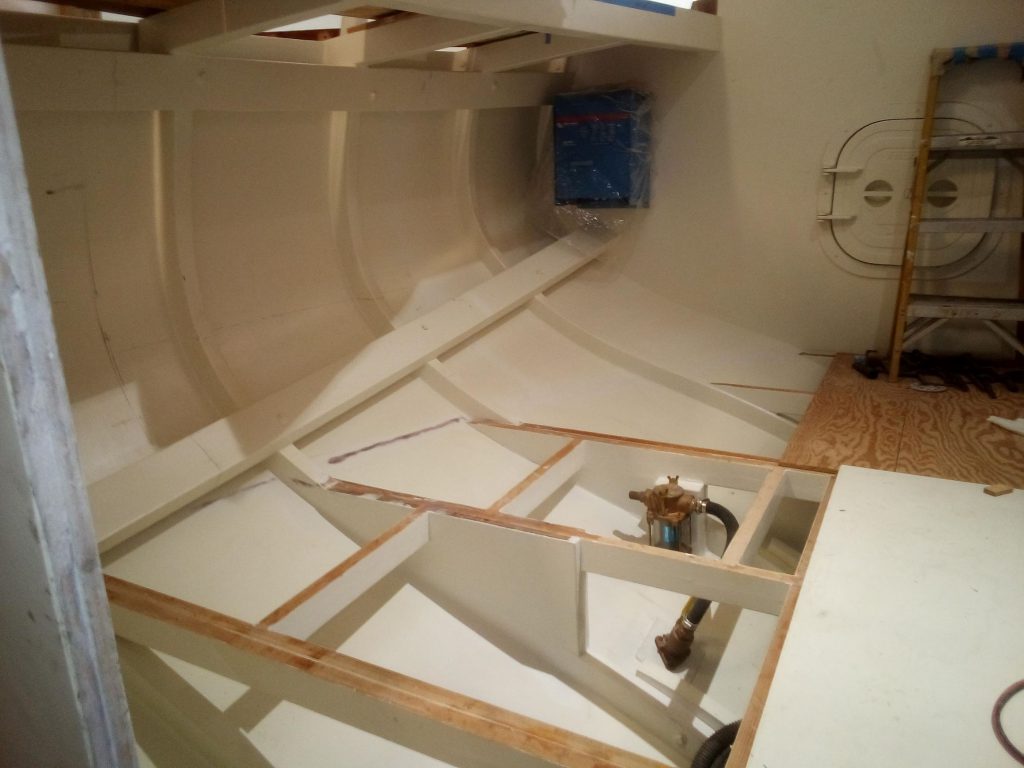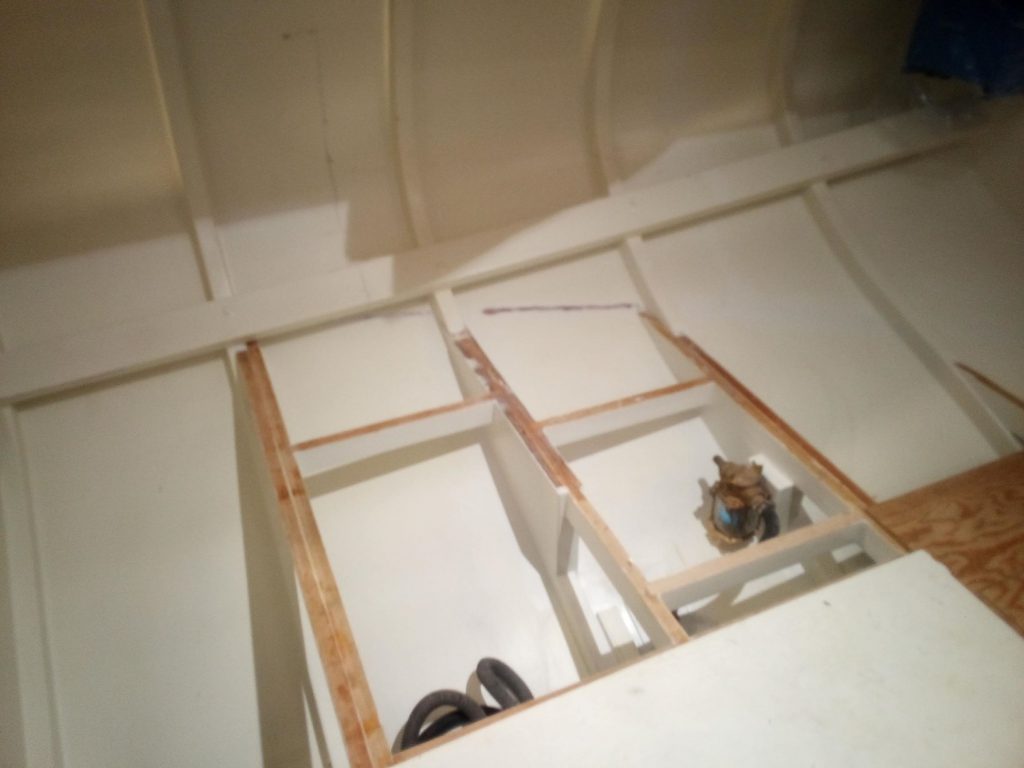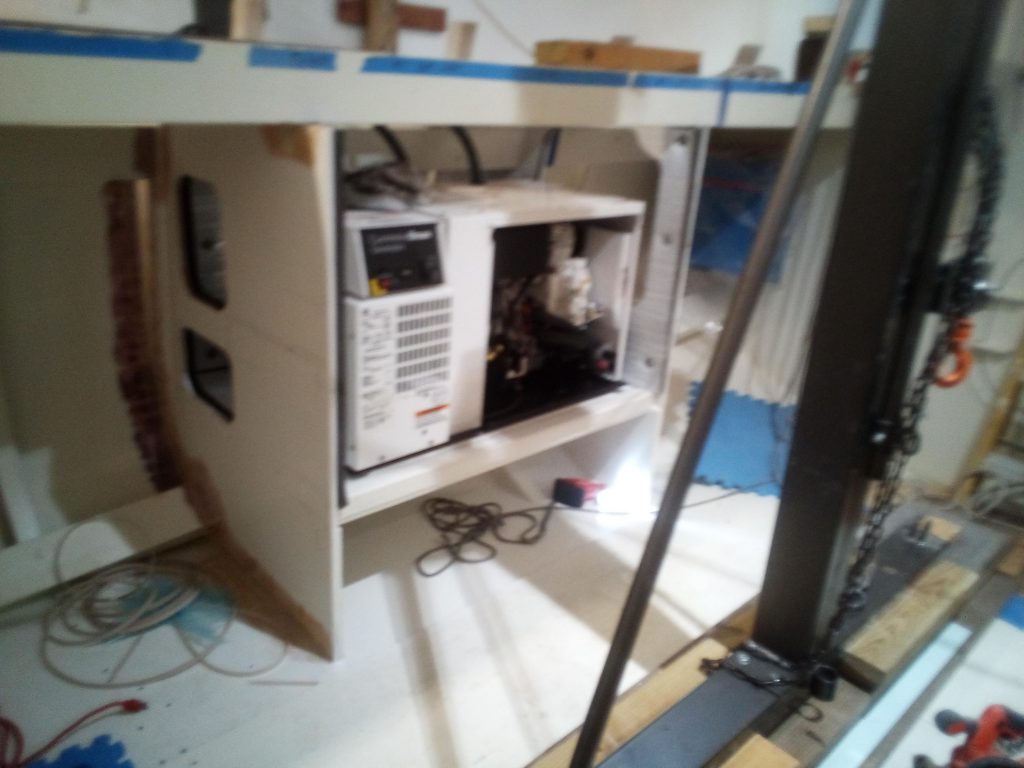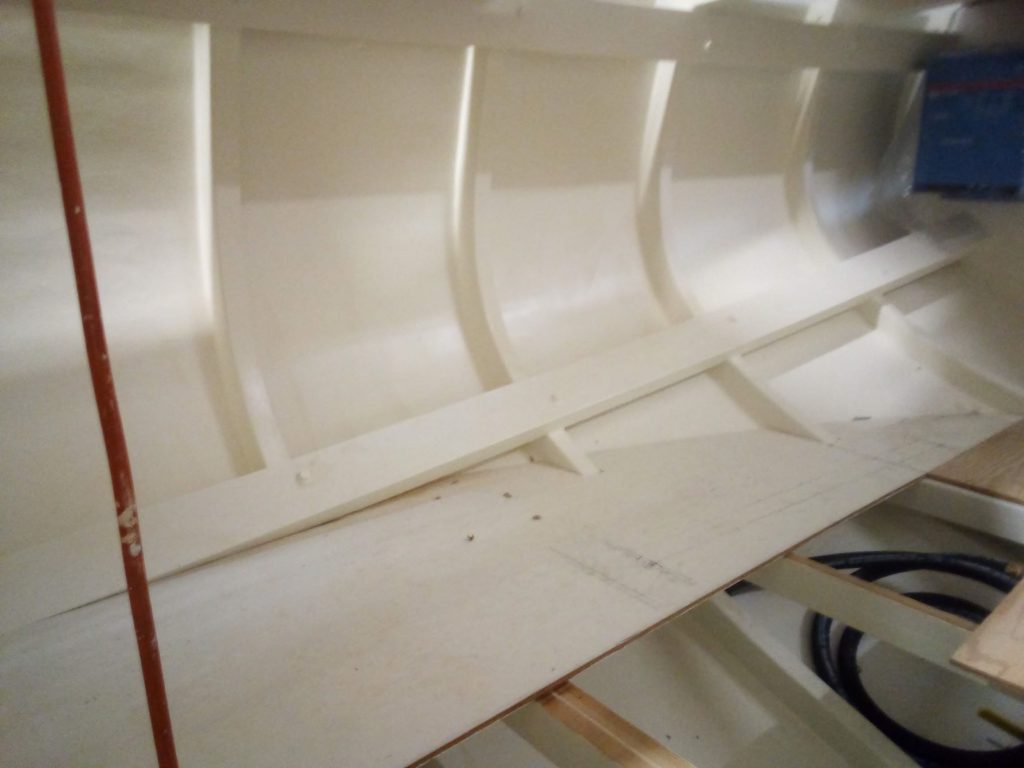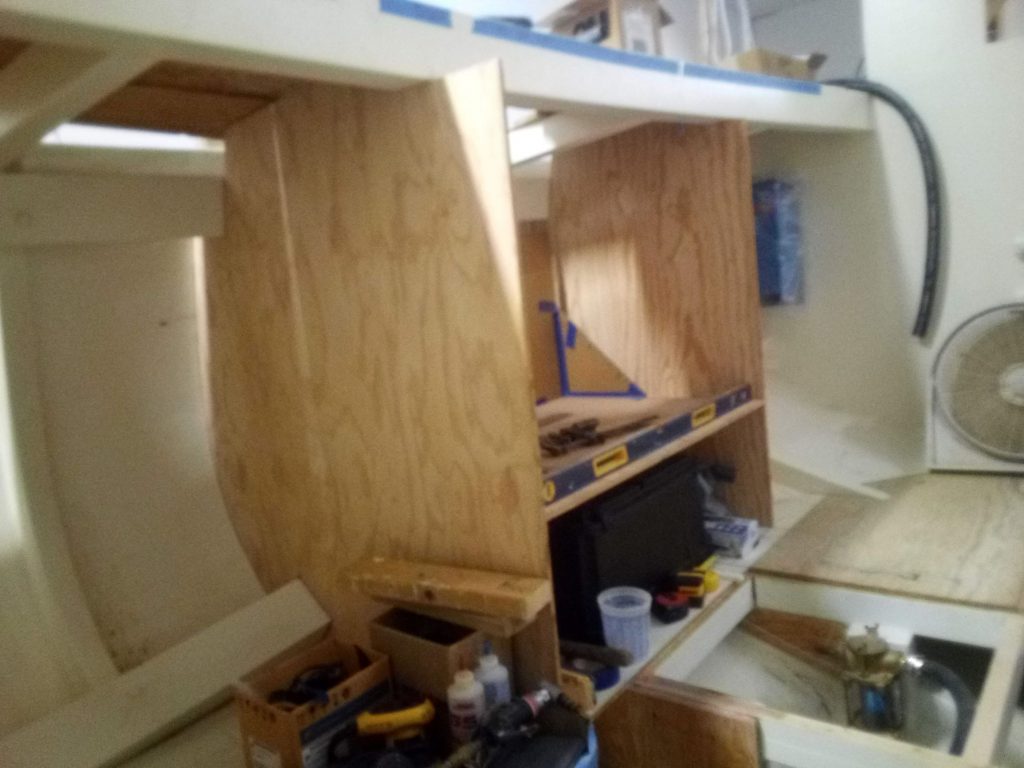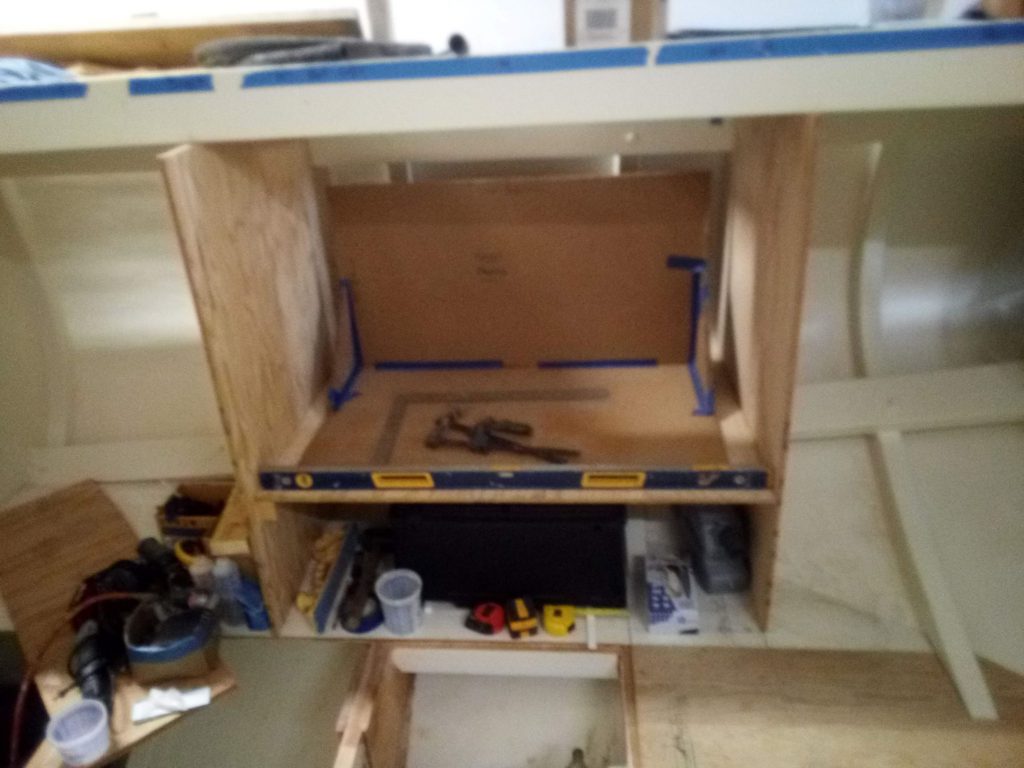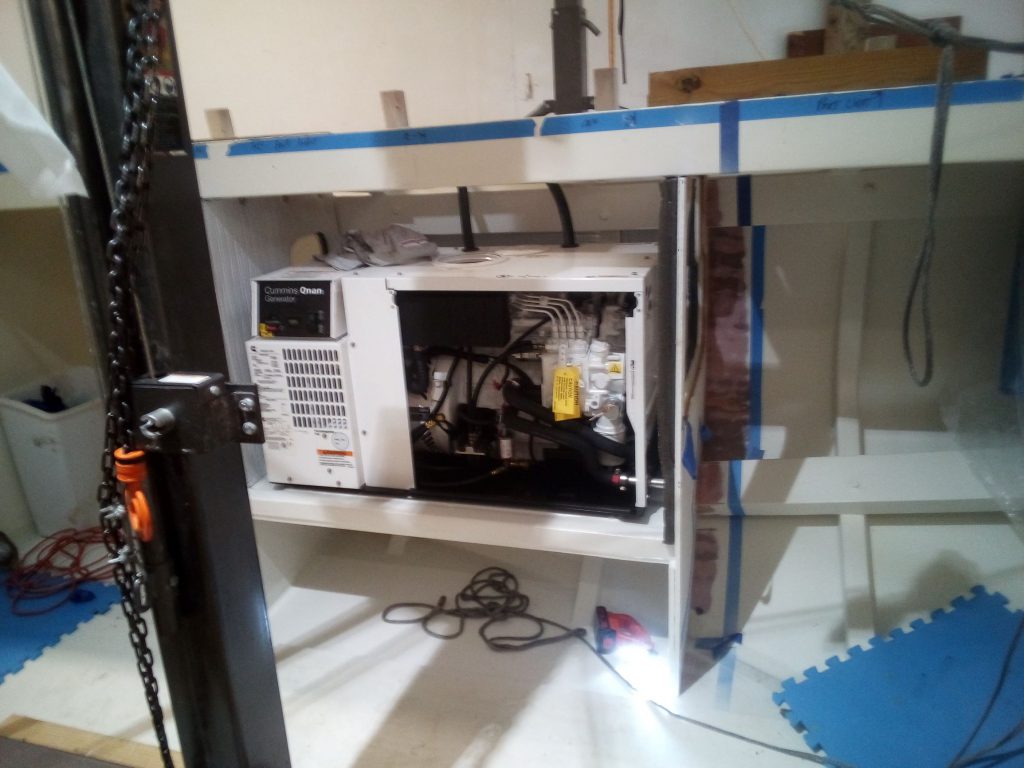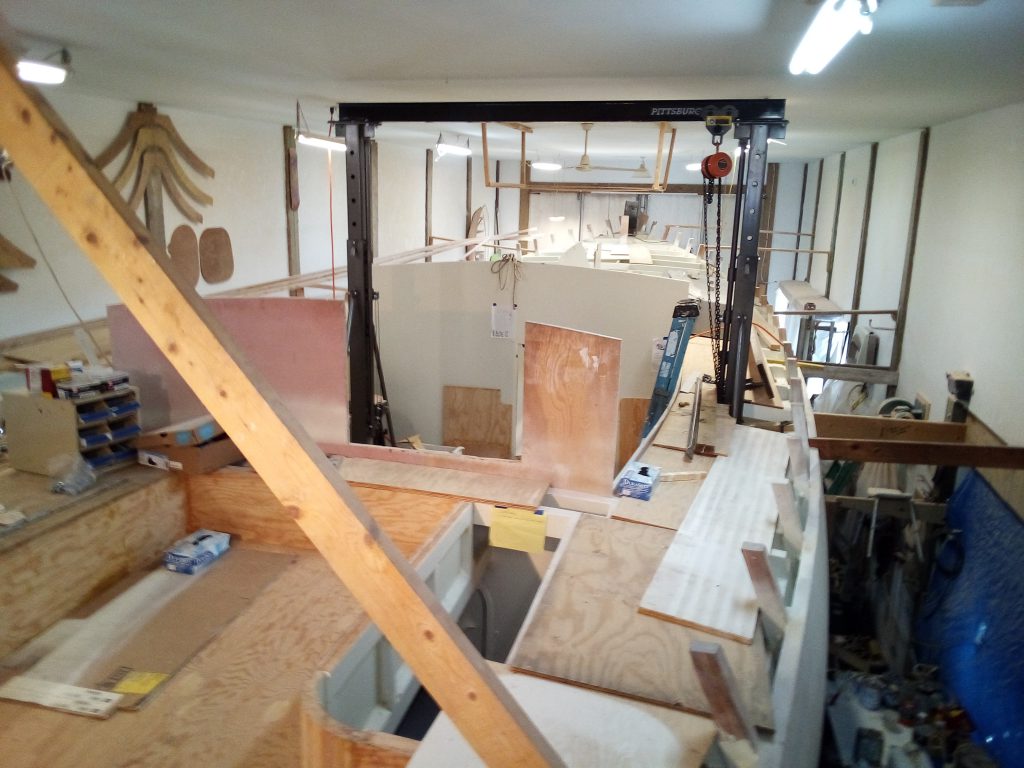Generator Power – Planning to Completion
Designs specs only indicated the desired location of the Generator Unit. From that point forward it was my task to work with the Owner and make final determinations on the unit selection and installation details. For “Belle” the original intent was for a Westerbeke unit under 10 kw. In the end we decided on the Onan 13.5 kw that would mate well and utilize all the power of the Quattro Pro Inverter Charger System capacity.
Thorough preparation and forethought are required to make the installation trouble free. Images above illustrate how the hull structure was reinforced to bear the peak loads of a a 1000 lb engine being bounced around at all angles of heel. Note the cabinet walls are notched around deck stringers. The cabinet genset shelf was designed and constructed for substantial weight capacity and was a combination of 1/2″ marine ply, longitudinal pyramid style supports, and 1/2″ of Carbon Unidirectional angle on the front edge. All of this was wrapped in a 1708 eglass infused laminate before installation. This project required the salon sole to be completed before installation, so the raw water intakes, engine room insulation and double layer sole had to be laid down prior to the final assembly of the cabinetry.
All surfaces and edges were epoxy coated, glued, filleted and tabbed into the hull structure with a +-45 1700 Eglass laminate. We made a cardboard box mock up of the generator to locate access hatches before final assembly. Because the unit is installed in the living space, special attention to creating a sound barrier was necessary. 1″ leaded foam installation was glued and screwed to the surrounding walls and planking. Cabinet doors when installed will also have the same insulation.
With the unit located above the waterline but outboard under the deck rail means that on Port Tack, the unit will be below the waterline. As will all raw water cooled engines, the Generator also requires assurance that there is no chance of raw water backing up into the cylinder block when below the waterline. Much of this was covered in the Onan installation manual, but there are always subtle differences and issues that need to be customized for specific hull types and designs.

